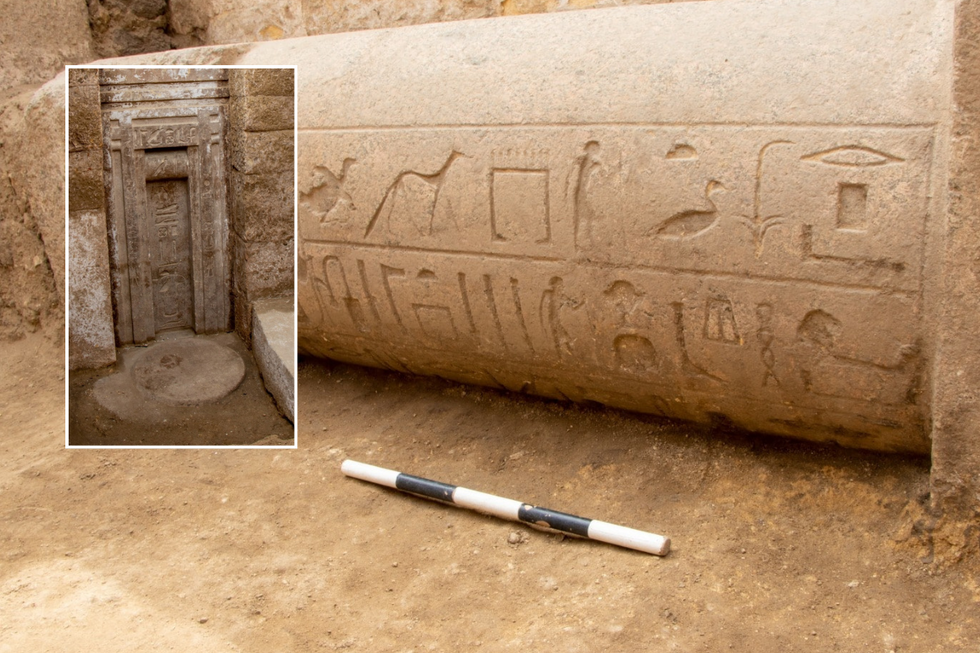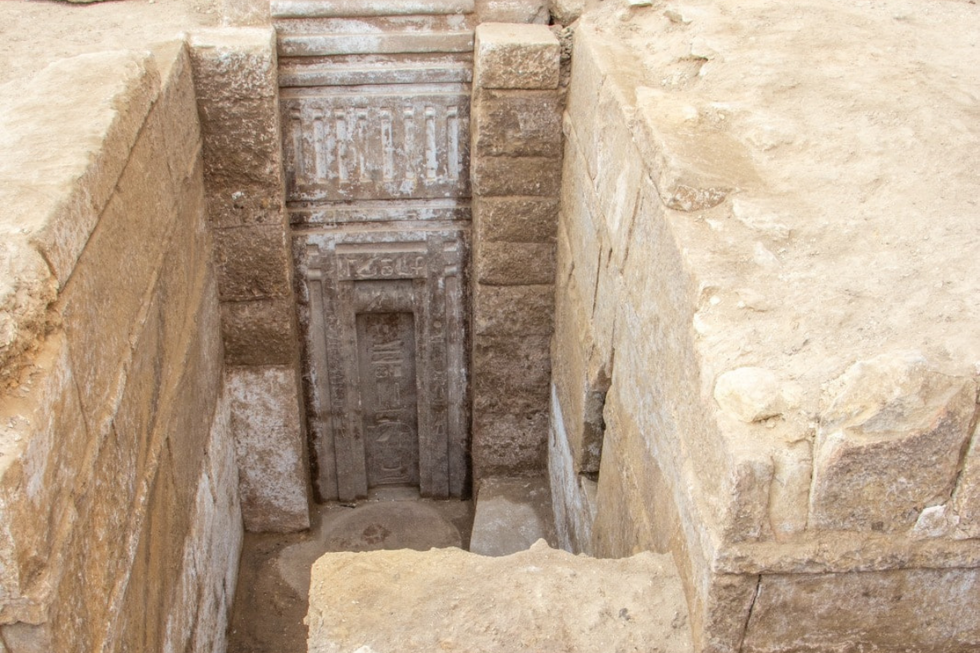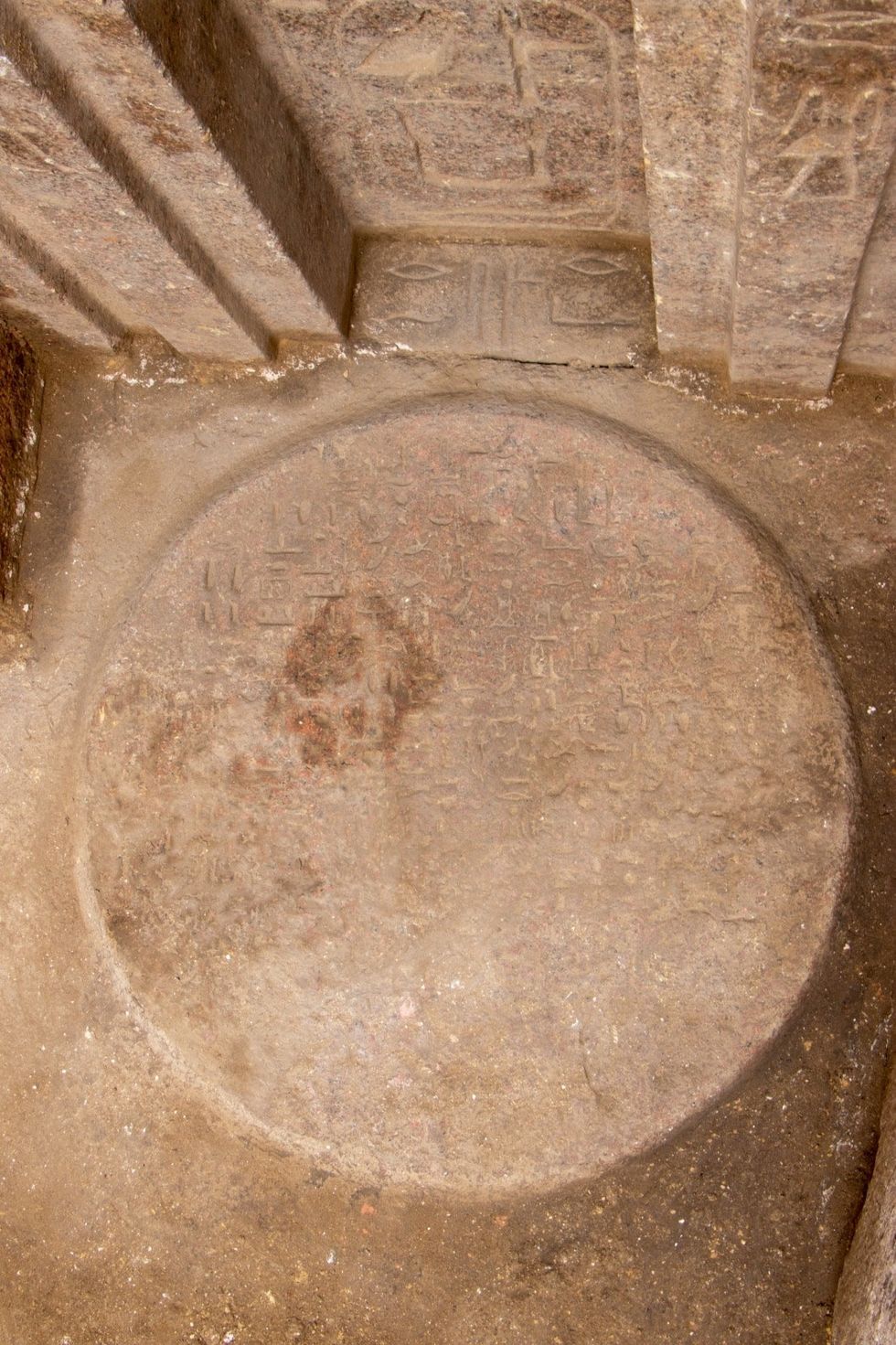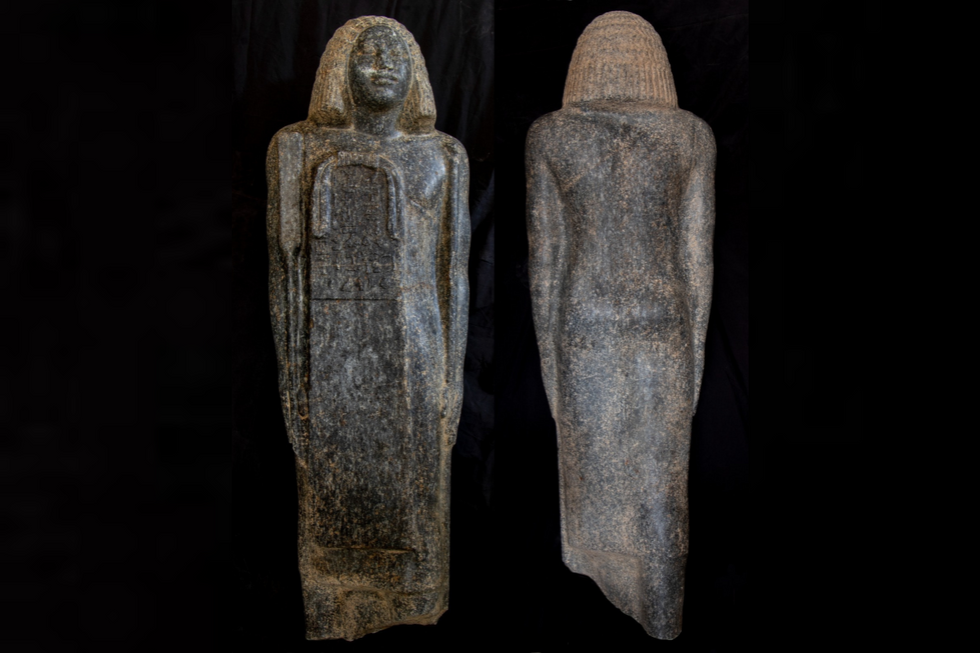WATCH: Dr. Mostafa Waziry Egypt Video
GB NEWS
The final resting place of Waserif Ra, son of Pharaoh Userkaf, was discovered
Don't Miss
Most Read
Trending on GB News
Archaeologists have made a remarkable discovery in Egypt, unearthing a 4,000-year-old tomb belonging to an ancient prince.
The tomb of Waserif Ra, son of Pharaoh Userkaf, was found during excavations at the Saqarra Necropolis, a mass burial site south of Cairo.
Userkaf was the founder and first king of Egypt's fifth dynasty, making this discovery particularly significant for understanding royal lineages.
Egypt's Ministry of Tourism and Antiquities announced the finding on social media, sharing images of the ancient burial site.

The discovery was made near Cairo
Egypt Ministry of Tourism and Antiquities
The discovery comes during a period of significant archaeological activity in Egypt, with several major finds being reported in recent months.
Among the most striking elements of the tomb was an enormous false door carved from pink granite, standing 4.5 metres tall and over a metre wide.
Dr Mohamed Ismail Khaled, Secretary General of the Supreme Council of Antiquities, noted this is one of the first discoveries of a false door of this size and material in the area. The impressive structure features hieroglyphic inscriptions detailing Waserif Ra's numerous titles.
These inscriptions reveal he held positions including "Hereditary Prince, Governor of the Buto and Nekhbet Regions, Royal Scribe, Minister, Judge, and Chanting Priest".

The discovery of the false door is believed to be the first in the area
Egypt Ministry of Tourism and Antiquities
The false door would have served as a symbolic gateway between the world of the living and the dead in ancient Egyptian belief.
The excavation also revealed a statue of King Djoser, a Pharaoh from Egypt's third dynasty, accompanied by his wife and ten daughters. Researchers believe these statues were not originally placed in the tomb.
Evidence suggests they were initially located in a room next to King Djoser's Step Pyramid before being relocated for unknown reasons.
The Ministry of Tourism and Antiquities stated their mission will "continue its work to determine the reason behind moving these statues from their original location". Also discovered was a red granite "offering table" used for sacrifices.
LATEST DEVELOPMENTS
- Mysterious chamber beneath Great Pyramid of Egypt could be tomb of Jesus Christ, expert suggests in remarkable claim
- Archaeology breakthrough as scientists claim 'vast underground city' in Egypt is tens of thousands of years older than the pyramids
- WATCH: Egyptian archaeologist shares excited message as second royal tomb uncovered

The red granite offering table with a diameter of 92.5 cm
Egypt Ministry of Tourism and Antiquities
This ceremonial surface contained inscriptions listing the sacrifices that had been performed upon it. Such tables were central to ancient Egyptian funerary practices, allowing offerings to be made to sustain the deceased in the afterlife.
Perhaps most intriguing was the discovery of a "colossal" black granite statue of a standing man dating to the 26th Dynasty. This finding suggests the tomb was reused more than 1,000 years after Waserif Ra's burial.
The statue bears an inscription of the name "King Neferirkare" on its chest. This practice of reusing significant burial sites was not uncommon in ancient Egypt.
The Ministry of Tourism and Antiquities has promised to "continue to uncover the remaining cemetery elements that are considered unique to the region".

A massive black granite statue, standing at 1.17 meters tall, was uncovered.
Egypt Ministry of Tourism and Antiquities
The discovery has generated significant interest among Egyptians, with many praising the announcement on social media.
This find joins other recent archaeological breakthroughs in Egypt, including the unearthing of Pharaoh Thutmose II's tomb - the first pharaonic burial site found since Tutankhamun's in 1922.








